

Al Cruz Solo Show
Richard Koh Fine Art
18 – 30 July 2009
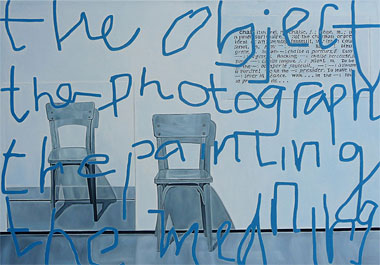
Four Chairs, 2009, 42 x 60 inches, oil on canvas
When Carl Andre’s Equivalent VIII (1966) became part of the Tate Gallery permanent collection the institution’s trajectory was suddenly apparent to forward thinkers. The idea for Tate Modern was no doubt there in spirit, amongst the uproar and mass education that ensued from that single acquisition. Such was the power of Minimalism and Conceptual art. Here and now, it is highly probable that many local artists and writers do not even know the above mentioned piece, its artist, the movement. That is the unfortunate reality of the modern world; it is important to challenge Western art history, but ridiculous to ignore it entirely or to operate as if it means nothing today. Far from holding on to ghosts of the past, curators and historians know: art grows from its history, no matter where in the world, or how, it is produced. The people who made new ideas in visual art a reality before everyone else could handle it, they are our heroes. So, a successful attempt at appropriation, as seen in the Al Cruz (Philippines) solo show at Richard Koh Fine Art, is a refreshing gift to the KL, and indeed South Asian, scene.
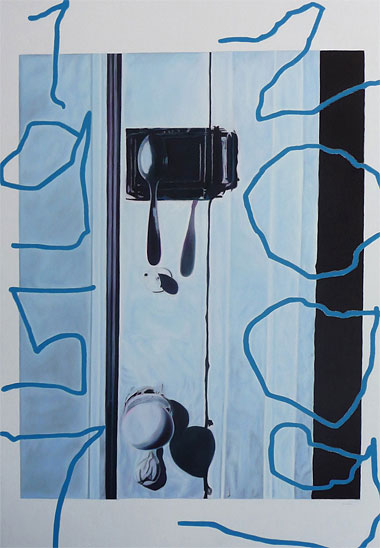
1957/2009, 2009, 64 1/2 x 48 inches, oil on canvas
This was another curator-less show, lacking an orchestrated build-up and delivery and severely lacking the polished finish a curator could bring. Nevertheless, within eleven works of art in a small space under fluorescent lighting can be held vision, talent and active potential. The artist, formerly a conceptual and performance artist, took Joseph Kosuth works and surrealist imagery as the subjects for oil paintings, within which he included the scrawled phrases, “Take an object Do something to it Do something else to it Do something else to it” or “the object the photograph the painting the meaning”. The One and Three Objects installations (all 2009) are the strongest pieces of the show by far, strong enough for any serious collection of South Asian contemporary art.
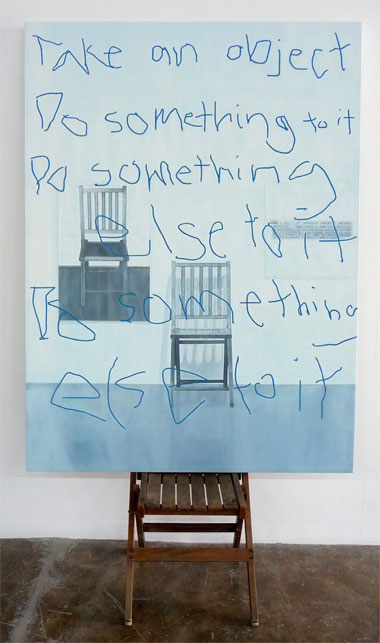
One and Three Objects III, 2009, 64 1/2 x 48 inches, oil on canvas and wooden chair
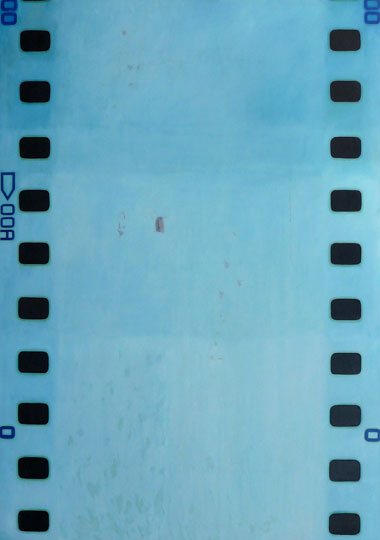
Still #3, 2009, 60 x 42 inches, oil on canvas
The old film of Readymade Remade (4 Panels) (2008/09) and Still #3 (2008), complete with oversized imperfections, are a display of the artists skills in painting, as are the surreal doorways of 1964/2009 and 1957/2009 (both 2009) which have the title years painted vertically at the left and right edges of the canvas . To viewers’ delight, Cruz references Duchamp directly with the words ‘Rose Selavy’ in 1960/2009 (2009) (the second local major reference this month after the Taksu Fab4 show!).

1960/2009, 2009, 64 1/2 x 48 inches, oil on canvas

Four Clocks, 2009, 42 x 60 inches, oil on canvas
These works have all been exceptionally executed. This artist is offering an extremely rare combination of talent, skill, education, and fresh perspective, and it is the fresh perspective that brings that all home and will ultimately help Cruz go far professionally. A photo-realist foundation secures the feeling of a (hopefully) familiar image from history but the text is instantly recognizable as free-hand written with a computer mouse, bringing the pieces to the context of present day quickly and effectively, like a slap in the face.
Efforts in appropriation can sometimes give the sense that true freedom to explore the definition of art is long gone. Of course, if we look at today’s art world that way it will quickly unravel, so we just don’t, instead we try to give art a chance. Here, there is no need. One gets the impression Cruz is a thinking artist on the way to an amazing place his mind wants to visit, and that he will go there alone if he has to.
(SW)

Four Hammers, 2009, 42 x 60 inches, oil on canvas
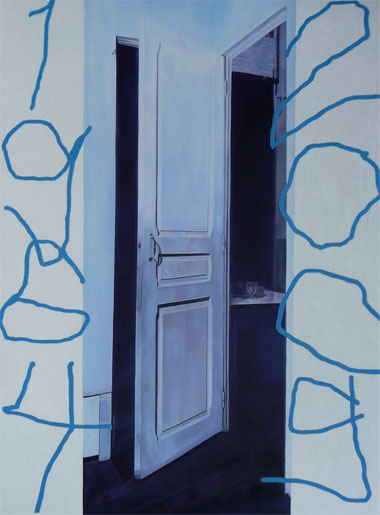
1964/2009, 2009, 64 1/2 x 48 inches, oil on canvas
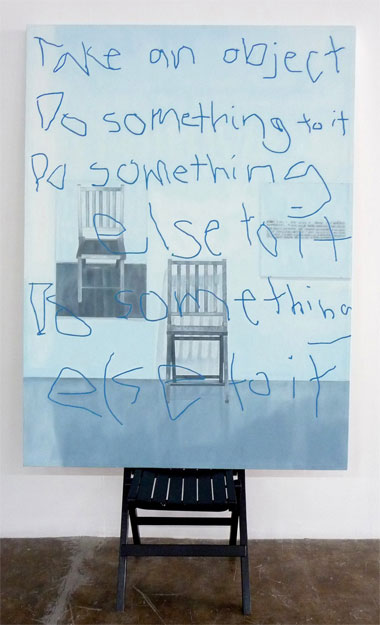
One and Three Objects II, 2009, 64 1/2 x 48 inches, oil on canvas and wooden chair
Al Cruz: Solo Show will be held at Richard Koh Fine Art until 30 July 2009
Sorry, the comment form is closed at this time.
Rose Selavy a.k.a Duchamp, not Dali
I think these were just photographic transfers / printed canvases with overlays of blue washes eh?
sorry fixes fixed